From Mr. H (reader thoughts follow)
“What tips do you have for a first-time HIMSS conference attendee?” a physician researcher asked me via LinkedIn after her employer approved her attendance at the last minute.
I instantly thought of Vietnam war movies, where the fresh-faced recruit asks the battle-hardened veteran (he looks like R. Lee Ermey from “Full Metal Jacket” except unshaven and gaunt), what’s it like to be in combat? I’m not sure anything I can say will prepare her for the front lines. You just have to experience some things firsthand and do the best you can.
The biggest and truest cliché about the HIMSS conference is the “three blind men describing an elephant” analogy. The conference offers many tracks, experiences, and opportunities to network. Your HIMSS20 won’t be similar to my HIMSS20 except for some keynotes (assuming I go, which I usually don’t) and way too much time spent roaming aimlessly in the exhibit hall. It’s like one of those hipster-trendy food halls crammed with wildly different restaurants and bars that share only a common seating area. HIMSS20 will be 25 unrelated conferences that share only an exhibit hall.
Which is my first observation. The conference is really a boat show that is surrounded by just enough semi-educational opportunities to convince provider attendees that they aren’t stealing from their employers when they expense the whole junket. Exhibitors foot the bills, so it’s like a Las Vegas hotel – no matter where you want to go, you have to walk the intentionally winding path through the casino, or in this case, the exhibit hall.
I tell attendees to set their dials on three conference activities that compete for their time — education, exhibit hall, and socializing. Decide upfront what you would like to gain from each, hopefully with your expense-bearing provider employer and their patients in mind. What combination of new industry education, specific product and company knowledge, and fond memories of eating, drinking, and shouting too much would make HIMSS20 a success? Are you really planning to accomplish actual work there, or is it just your employee bonus with few strings attached?
I admit that I nearly always leave HIMSS conferences feeling guilty that I mostly goofed off, or at least used my time inefficiently despite higher initial ambitions. I always vow to attend an ambitious list of education sessions and to perform serious vendor research, but I end up walking zombie-like miles of deep exhibit hall carpet filling up my trick-or-treat bag with vendor ChapStick and pondering just how cheaply I value my time. Or I sign up for some vendor party in picturing a grand evening under swaying Orlando palms that sounds swell in winter’s dark back home, but realize once I’m there that parties really aren’t my thing and I’d rather feed my introversion some quiet time.
I’m too lazy to put a lot of thought into my HIMSS conference advice, so I’ll divide it into two parts. First are my off-the-cuff thoughts, then the suggestions of readers who chimed in at my behest (because it’s less work to ask them to come up with ideas than me doing it myself.)
Before Leaving Home
I’m speaking to my fellow males here. Get a pedicure the week before the conference. I admit that I was squirming with discomfort the first time Mrs. HIStalk insisted that I get a pre-HIMSS foot tune-up. She made me a bourbon and lemonade in a Solo cup that I brought in with me for liquid courage (which was actually pretty cool at 11 a.m.) She had her nails done in the adjacent chair and tolerated my trite newbie observations about why nail techs are always from VIetnam and how it’s odd seeing a roomful of women all staring longingly at their phones while having their feet worked on by another woman. But it was shocking how much calloused, dead skin they shaved off with the cheese grater and how my walking and balance improved in return for my $30, which included a sugar scrub and hot stones that seemed pointless but felt good.
Pack a backpack or briefcase. You’ll get a free one when you pick up your badge, but the one they handed out last year was useless. Your bag will serve as a temporary home for vendor collateral, which you take in a moment of either camaraderie or temporary interest and then toss into the trash when packing for home.
Bring a phone charger battery. Phone batteries drain fast when slugging it out for a signal in packed rooms. Use low-power mode if you think of it.
Wear comfortable clothes, especially shoes, unless impressing someone is on your list of activities. Don’t wear anything that won’t get you through 10 miles of walking and standing each day. Forget high fashion unless you’re working a booth or interviewing for a job — nobody will be impressed that you busted out your high heels or best suit for walking a half-marathon each day (literally in many cases) on exhibit hall carpet.
Bring business cards, especially if you are among the significant percentage of attendees who are hoping to get a better job than the one provided by the organization that covered their attendance expense (ironic, isn’t it?)
Getting There
Drive your own car instead of flying if you’re within a 12-hour car ride. I dislike the inefficient stress of flying for business, crammed into tiny seats surrounded by sugared-up, screaming kids wearing Mickey Mouse ears or testosterone-jacked tire salesmen heading off to their Las Vegas hooker and machine gun getaway. The elapsed time from leaving for the airport to setting foot in your Orlando lodgings may not be much less than driving, especially if your flight isn’t direct.
I think of driving as an extended meditation session, where I let Waze tell me what do while I reflect on life in general. I don’t worry about overweight or lost luggage, missed connections, security lines, and the mile-long cab line at MCO. I can leave the conference for home whenever I want, which is important since I usually bail out even earlier than I planned.
I hate milling around sterile HIMSS hotels with all the other nerdy, badge-wearing lemmings, so I always book a condo via Aibnb or VRBO. It feels much more like home or a vacation than solitary confinement and it costs less than a hotel.
Staying There
Hit the nearest Publix for full week’s worth of food and drinks. You’ll spend about the same as you would for one hotel dinner or room service. Then come back to your condo, savor the attendee-free quiet, and enjoy time in front of Netflix, the lake, or a local bar where tourists never tread (having your car provides options).
When you buy those groceries, get breakfast items and snacks. You’ll save time and money eating breakfast before you head out each morning and a granola bar will get you through the mid-morning, low-glucose woozies. You’ll save even more time and money by drinking your coffee while relaxing in your condo instead of staring at the suited butts of 500 of your fellow caffeine addicts who are ahead of you in the Starbucks line. Bonus points if you bring an insulated cup and take extra coffee to the convention center for more deliberate slurping.
Check out the HIMSS bus routes since your rental place may be near a stop and thus your chariot will await. HIMSS says the buses are only for people who booked their hotel through HIMSS, but the driver doesn’t care. Prepare for frustration, however, especially on the first day of the conference when everybody is headed to the convention center at the same and the full buses drive by without stopping. Going home can be a chore if your stop is way down on the list. Bus stops aren’t usually covered, so if it’s raining in the morning, call an Uber or Lyft to avoid starting your day bedraggled and wet.
Once you’re on your way home to your hotel or condo, take off your badge and put it in your non-HIMSS backpack to create an instant shield of anonymity. Breathe deeply as a traveler, not as an identically labeled conventioneer or obvious tourist. That smell is freedom.
Education Sessions
I don’t attend sessions in which any speaker is a vendor (sorry, “market supplier.”) I don’t doubt their commitment or intelligence – I have just been burned too many times by speakers who recited the company line or whose world view bore little resemblance to my reality. Seek them out in the exhibit hall presentations instead, where the audience is smaller, the topic is more focused, they can talk more about their company and competitors, and you don’t waste a full hour in a packed conference room. I sometimes enjoy those exhibit hall talks, which is rarely true of the big room sessions.
Choose sessions based on who’s presenting rather than topic. Interesting, insightful presenters can make any topic worthwhile, while under-accomplished slide-readers can’t save even the most contemporary presentation from becoming a snooze-fest. It’s hard to separate the wheat from the chaff, however, since the native language of some big industry names is “platitudes,” while some fearless no-names might actually express some original thoughts.
Attendees get audio recordings of most sessions after the conference at no charge, so you don’t have to physically attend everything. Or anything, for that matter. Just play back what seems interesting afterward at double speed. You don’t even have to climb across 50 sets of legs to escape a dud session. Try not to think about the cost and effort involved in traveling to the conference that brags on “education” that could have been distributed as MP3 files.
Sit where you can escape easily if the session bombs in the first five minutes, which is usually the case. Remember that the presenters had to submit their talk many months in advance, so not only is their content stale, they have over-rehearsed and end up reading their slides like a “follow the bouncing ball” monotone sing-along. I have no patients for presenters who write out full sentences as bullet points, read them in a grade schooler sing-song, turn their backs on the audience to look at the screen, and add zero value to just reading the PowerPoint printouts on your own.
Leave as soon as the presenter is finished since the Q&A attracts suck-ups who have no questions, only statements in which they attempt to demonstrate the depth of their knowledge. You’ll see them creeping up to the microphone before the speaker is even finished, oxygenating with deep breaths so they can at first opportunity rattle off a multi-minute pontification without coming up for air or asking an actual intelligent question (I’ve seen them spew their self-congratulatory nonsense and then leave the room before the speaker even finished answering them, seriously). Don’t try to make your way to the podium for glad-handing the speaker when they launch their uninvited monologue because you’ll get run over by the masses who are running faster for the doors than if someone shouted “Fire!”
Have a backup session in mind in case the room is packed or the handout looks less interesting that you thought. I usually just pick something randomly in a nearby conference room since it won’t disrupt my planned, miles-long route from one room to the next. Some of the best sessions I’ve attended were ones where I just stumbled into the first room with a lot of empty chairs.
Lunch
Bring something from your rental condo refrigerator or plan to eat really early. Every convention center food outlet will be mobbed throughout the hours that might be considered lunch, say from 11:00 a.m. to 2:00 p.m. You will pay $12 for a chicken Caesar salad in a plastic coffin that is handed over by a clearly unenthused worker, after which you will sit on the floor in an unused corner of the building because every single table, chair, or flat surface on which you or your food might have been placed has been appropriated by an equally desperate attendee seeking horizontality. It’s the casino analogy again – vendors want you roaming the exhibit hall, not lingering over your sandwich and telephone on a comfy chair, so chair-seekers outnumber chairs by about 100 to one. On the other hand, feeling like an outcast grade schooler in the cafeteria is humbling, and quite a few attendees could use a serious dose of that.
Lunchtime frustrates me more than any other time during conference week. It takes way too much time, the food is mostly not good and usually unhealthy, I hate scouting for a freshly vacated seat at a debris-laden table full of people screwing around on their laptops trying to look important, and I end choosing the food venue with the shortest line and quickly realize why the crowds went elsewhere. On the other hand, one Orange County Convention Center food stand remains easily the best I’ve ever had at a conference, with food that is fresh, ample, and more cutting edge. Its existence is binary – it is either closed or packed with people – but I still think of that place years after I last ate there. I’m not telling you which one because longer lines will send me fleeing to yet another greasy personal pizza from a chain I would never patronize at home.
Exhibit Hall
Decide what do you need from your exhibit hall experience. Fake adulation from booth people who see you as either a sales prospect or an insufferable bore who is fun to jack around? A celebration of your admirable existence that allows you to earn a salary for wandering through neon gulches of unreality while fueled by free snacks? Actual information in the form of product and vendor research, at least while waiting for exhibit hall happy hour to kick in?
What I like about the hall is that whatever you learn there sticks. You probably won’t forget what you were told. I also like that I’m in charge of choosing what interests me and walking away when I lose interest (just tell the overzealous rep that you’re running late for a scheduled meeting, never mind that it’s 9:43 a.m.) Most of the reps are nice people and are just as bemused as you by the futility of creating a meaningful exhibit hall experience, at least when they aren’t staring at their phones in boredom or in anger that they have no chance of earning commission given the heavily non-decision maker HIMSS attendance. Just don’t let the time get away from you in wandering around. It’s easy to feel like you are networking and learning while high on carpet glue and salesperson cologne, but afterwards realize that it was mostly an illusion.
I’m a contrarian in refusing to schedule meetings with vendor people. Schlepping a mile to their booth can eat up more time than it’s worth. Just show up when you feel like it and risk that you’ll have to talk to a lesser god, knowing that it’s their job to be flexible when a customer or prospect is involved. They’ll find you.
Seek out the little booths in Siberia, or at least stop paying lip service to disruption and innovation if you are embarrassed to be seen in a booth that doesn’t feature an attended espresso bar and foot-deep carpet that’s crawling with glad-handing suits. Visit booths whose size is inversely proportional to the degree of risk your organization historically accepts — employees of risk-averse health systems (was that redundant?) might as well stick to the main aisles because there’s no way they are buying anything from people in 10×10 booths like I used to pay for.
The exhibit hall is a meat market for people trying to get new jobs. Reason: because it works, especially if you work for a vendor or would like to.
Social Events
I long ago decided that I’m not willing to sacrifice an entire evening jostling around strangers just to earn a couple of beers and to hear the most inoffensively white-bread music imaginable, but that’s just me. Social events abound, and listen closely through the day and you’ll heard about them. Some require a vendor’s invitation and thus a sneaky strategy to obtain one as a non-prospect. Vendor employees aren’t welcome to most events since nobody wants to pay to entertain competitors, which is why HIStalkapalooza was such as success even if it was a huge pain to manage.
I usually skip the HIMSS opening reception because it’s too big, too loud, and too boring, especially when the conference is in Orlando and the entertainers are Disney day-jobbers channeling Cirque du Soleil. Still, it’s like the clock in Grand Central Terminal as being a good place to pre-arrange meeting colleagues on fly-in day, and with the retirement of the old two-drink ticket system, it’s fun to watch ever-louder attendees getting hammered before they’ve even checked in to their hotels.
Don’t do anything that would embarrass your employer if you are wearing a badge with their name on it. Whether that means behaving or taking your badge off is your call.
The Last Day
I rarely stay for the final day since it’s short and usually pointless, especially since the exhibit hall isn’t open (and HIMSS without the exhibit hall isn’t exactly a thrill ride). However, it’s also a relaxing, no-pressure day and maybe you’re sticking around to avoid the departing masses. I usually enjoy it, although my expectations are modest. It’s tougher to find food venues, though. An even better idea is to take a two-hour drive over to Florida’s west coach beaches and eat a grouper sandwich on a restaurant’s Gulf-front patio, then leave at your leisure over the weekend.
Wear your most obnoxiously casual (and therefore comfortable) clothes on the last day you’re attending. Nobody cares at that point, assuming they ever did, and you may be heading straight to the airport. Now’s the time for shorts, Hawaiian shirts, and sandals since it’s Florida (change into warmer clothes in the bathroom if you’re going home to freezing weather). Plus people might mistake you for an investor — a valuable HIMSS lesson is that the startup guys who need investor money dress look like children whose parents made them dress up for a formal British wedding, while the people who actually have money look like they just popped in from a members-only golf course or a bottomless mimosa breakfast buffet.
Back Home
Don’t be depressed because you think that you or your employer are underachievers compared to the swaggering experts you saw riding the podia or vendor lecterns. Most of those people are harmless blowhards working for organizations that are just as clueless as yours. Being an effective, innovative provider organization in the dysfunctional US healthcare non-system is like being the tallest jockey. You are probably just as effective as anyone else, just less skilled at bragging.
Make up a convincing answer when your boss and co-workers ask you how the conference was. You have to make them think you were working as hard in Orlando as they were back home.
The Part Where I Get Less Cynical
Go home with new energy and commitment. If watching an A-Rod keynote or eating too many exhibit hall pastries does it for you, then that’s your business.
Embrace the diversity of attendees who are young, from other countries, and who consider themselves caregivers first. It wasn’t that way for most of the formative years of HIMSS.
Expect vendors and their employees to be enthusiastic about their products and services. Agree or not, you wouldn’t want them there otherwise.
Perfection is the enemy of good. Don’t get dragged down because EHRs, interoperability, the government, and your employer aren’t perfect. Don’t let anyone convince you that they offer something perfect, either. We are all making it up as we go and nothing about your careers is likely to earn a spot on your tombstone.
Respect the truly remarkable result of HIMSS people who spend years planning every conference so well that you don’t even notice the work involved. Nothing you will see or do happened without a lot of planning, arguing, executing, and monitoring. Every memory you take home was made possible by someone who sweated the details.
Patients make the industry, the conference, and your job possible. Be a good steward of the resources with which you’ve been blessed and always ask yourself, what would patients want? Find another job if it’s just another job.
From HIStalk Readers (add your own comments below)
Set up meetings ahead of time.
Search out patients or patient advocates.
Go to as many educational sessions as you can.
Make the most of interactions – in line, on the bus, while grabbing coffee, when attending sessions. So much of HIMSS is about making connections, sharing interest and becoming engaged with one another and the opportunity to do so is all around you. Follow up with a LinkedIn connection request or a Twitter follow.
Plan for curiosity. HIMSS is hectic and a pre-planned schedule will help you remain focused but do schedule time to be engage with last minute vendors, sessions, conversations that spark your interest.
Let vendors know you want to demo or attend in-booth activities to maximize your time on the show floor. Most vendors offer pre-scheduling tools via email and/or their website to facilitate this; use it.
You’ll miss many things. Sign up for post-HIMSS webinars and seek out blogs for what you missed and insights on this year’s topics- HIStalk of course being among the most useful sources of HIMSS coverage.
Many vendors offer breakfast briefings, lunches and social events, all of which are additional means of expanding your learning and networking without missing educational sessions.
Follow #HIMSS20 across LinkedIn and Twitter.
Attend your HIMSS chapter event.
Hand sanitizer is your friend. Apply frequently and liberally.
It has become a humble-brag for established companies, a hot air balloon ride for smaller ones. I genuinely think they forgot about mid-sized ‘buyers’ along the way, especially end-user doctors. It’s insular, it’s full of self-promoting blow-hards, it really lacks any actual value from almost any perspective.
If you see someone on jeans, they are probably financing most of the ‘cool’ startups you are seeing. People in suits have the real jobs.
As a researcher, just let us all know when you find novel technology that has actually conducted research on the outcomes / benefits of their solution. Because in 14 years of attending, I never once saw actual research, just a bunch of cherry-picked stats provided by a ‘beta’ client that was generously compensated for the data. (and yes, reduced fees for a product is compensation, IMO).




















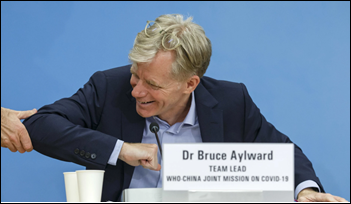











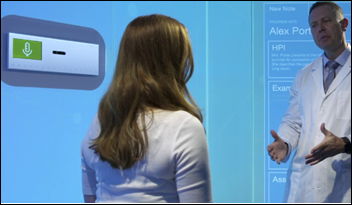





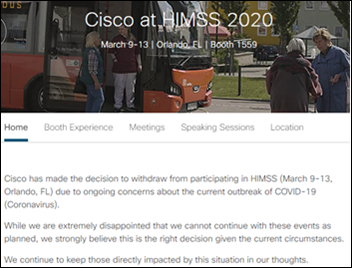





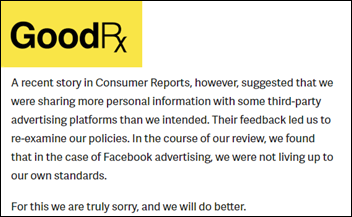























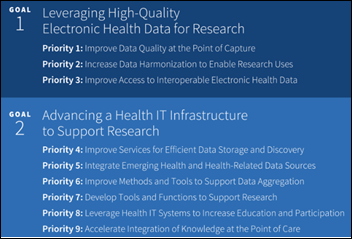









































































Traditionally Professional Courtesy is something that physicians gave each other - but we had to be careful with it when…